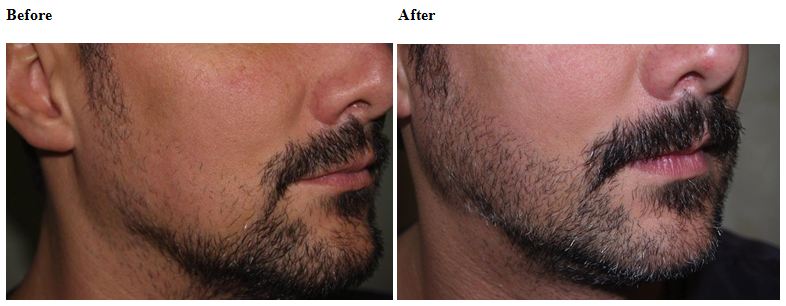Last month I wrote about how the revival in the popularity of beards was hurting razor sales, causing companies like Proctor & Gamble to ramp up advertising encouraging “manscaping” below the neck. Here’s another response to the trend: hair plugs for your face.

According to a facial plastic surgeon interviewed for an article at DNAinfo New York, the rate at which he is asked to do facial hair transplants has skyrocketed from “ just a handful of beard transplants each year a decade ago” to about three a week. The surgeons mention the hipster beard trend as one cause of the rise in interest, but also cite a wide array of people who might be interested in fuller facial hair:
[C]lients include men who have struggled since adolescence to grow a beard, those undergoing a gender transition from female to male, men with with facial scarring and Hasidic Jews who hope to achieve denser payot, or sidelocks.
Expense for the procedure ranges from $3,o00 for partial transplants to $7,000 for a full beard.
https://www.youtube.com/watch?v=-SRrT-pa-BYWhat a fascinating example of the intersection of race, gender, religion, technology, and capitalism. Which men’s faces have more power to determine appearance norms for men? Or, what does masculinity look like? Men with Asian, American Indian, and African backgrounds are less likely to be able to grow full beards, but a society centered on whiteness can make their faces seem inadequate. If the situation were reversed, would we see white men, disproportionately, going in for laser hair removal? Would transmen feel less pressure to be able to grow a beard to feel fully masculine? Would they feel more if they were part of a Hasidic Jewish community?
Also, is this really about hipsters? How much power does a young, monied demographic have to set fashion trends? To send a wide range of people to surgeons—for goodness sake—in the hopes of living up to a more or less fleeting trend? How do such trends gain purchase across such a wide range of people? What other forces are at work here?
What can we learn from this about other plastic surgeries that we are more likely to take for granted as the result of natural or universal beauty? Breast implants for women, breast reductions for men, liposuction, facelifts, labiaplasty, or eyelid surgery?
Lots of interesting conversations to be had.
This post originally appeared on Sociological Images, a Pacific Standard partner site.




